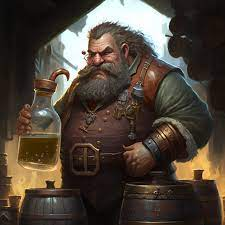- cross-posted to:
- HistoryMemes@kbin.social
- cross-posted to:
- HistoryMemes@kbin.social
Hella unlikely they were used to knit gloves
Unlikely why?
Here’s a video of it being used for that: https://youtu.be/76AvV601yJ0?si=kvdh4ZLiBCmyldPN
I have seen people argue that "they are pretty intricate and expensive things to use only for the purposes of knitting gloves. ". To them, I would like to submit my wife’s $1100 sewing machine that definitely gets used, and isn’t just some weird status symbol among creative types.
Just because you could use it for knitting it doesn’t mean it was its purpose.
There’s not a lot of detail, but you can check on the Wiki why it’s ultimately an unlikely explanation: https://en.wikipedia.org/wiki/Roman_dodecahedron#PurposeThanks! I really like the idea that it was a test of skill of a blacksmith.
That seems like the most likely thing to me too
Knitting isn’t attested until almost a millennium after this artifact was created. Nålbinding was practiced during this era in a variety of areas and can look very similar, but is mechanically very diffferent.
Scale replicas can be used to knit gloves. Life size ones are way too big to make gloves for humans.
Yet more evidence for Giant cyclopes
As if we needed any more.
Have a quick think, what’s bigger than a finger…?
Ofk. They just made them to troll future archaeologist

My mother has a fascination with Roman Dodecahedra, so I 3D printed her one for Christmas. She hasn’t knitted any gloves with them yet. (And may never, but she still likes it and has it sitting on the mantle over the fireplace.)
Printing a Roman dodecahedron seems like an interesting torture test for a 3D printer, plenty of overhangs.
Yeah, the particular model I printed was specifically designed to be easy-ish to print. It’s printed in like 32 parts (one for each face and one connector for each vertex) and requires assembly after printing. All to avoid overhangs and such.
But yeah. Raw-dogging it with the supports would be pretty nightmarish. Lol.
Just like my code. It’s obvious what it does and doesn’t need documentation… until I try to understand it 2 years later.
Lol, try two weeks later 😅
Ehm, two days for me ;)
Archeologists when we’re ancient:
“Wtf is these?”
“I dunno but I bet my mum could knit a glove with it”

It’ll take them a single step on them to understand these were used in wars. That they are no longer used because they were probably banned for human rights violations.
You jest, but people actually did (and do!) use them in wars:
thanks for the link, surprisingly interesting read.
I knew this didn’t seem right for a kids’ toy. Why would anyone want to inflict so much pain to innocent children?
They were replaced by the ones that blow up instead. Less pain but more instant death.
Children’s caltrop set.
Rule number 1 of archaeology: if you don’t know what it is, then it’s religious.
Btw my favorite theory is that they are some kind of dice for a game. The little nubbins on the corners would help them bounce around better.
I always assumed they were for a game. Why have a different face on most of the sides if they werent some sort of dice like game piece?
Honestly though I’m glad archeologists went with “mittens” rather than their old standby “human sacrificing sex cult worship”.
Edit: fuck spelling is hard
Hey now, archeologists know their sex cult stuff hence “fertility object”. The we dont know is usually labelled as ritual object and left at that.
the holes seem too small for, er, fertility…
Every hole is a goal.
Foot massagers
AMAZING! You have uncovered the missing thing that goes INSIDE the dodecahedrons!
Every Roman has a plumbus in their home. It’s clearly a Latin word.
E plumbus unum
Plumbinnious
I like how archeologists never come to the conclusion that something could just be an art trend.
Everything has to have a useful purpose even though we all own stuff with no actual purpose.
The default bucket that archeologists throw stuff into if they really don’t know is “religious object”.
Oftentimes, that’s a sort of inside joke. If it’s even remotely probe-shaped, they assume it was used for sex. But since that doesn’t look nice on academic papers, they’ll use “ritual” as a euphemism.
Seriously, archeologists find a lot of ancient dildos.
Maybe 50 years ago. Don’t think there’s as much holdup now.
Gotta disagree, I bet they’re still finding great-great-great-[…]-grandmother’s dildos (or -grandfather’s, who knows?) and they hold up just fine, all things considered.
It’s obviously a symbol of power!
The wiki on this specific object briefly mentions it may have been for decoration
How dare you assert my wall of funkopops has no purpose!
They do come to that conclusion all the time, but in some cases it’s impossible to know for sure. If they don’t know for sure then they’re not going to say it’s definitely for decoration only, but they’ll list it as an option, which they have done for this object.
That’s a prime chaotic resonator, It’s to apply fossils to your gear…
By the shining golden arse of innocence, I got that reference.
It’s a rope junction, with the different holes for different knots and rope bundles, with the spokes serving as rope bend/end points. Presumably it would get weeded out as the places where it was employed either stopped making use of them, like perhaps the weather fabric roof shielding of the coliseum, or ended up using more specialized means, like for sailing.
These things are generally found with coins. They would have been shockingly expensive to use as a rope junction when there are other, cheaper ways to do that. They would have been difficult to produce, especially in any great quantity, hell it would be hard today. There’s also at least one icosahedron floating around somewhere that’s very similar but with fewer openings
It would make sense that if there were better alternatives that the other, cheaper ways to do that would win out. It’s metal working, you are talking as if the gladius wasn’t common in ancient Rome.
It’s just intuitive for working with rope, given the shape of the spokes and the holes, in a way where it would be treated as a junction. The ones that do have the holes have different sizes, giving a glimpse of additional features being incorporated into the tool and hinting at what it might have been used for.
It’s called a Roman dodecahedron, except not so much for the version of it that has no holes.
What I’m beginning to think is that it was designed to spin (hence the circular groves on the sides) and join smaller ropes into those of bigger sizes, with different holes adapted to different templates of sizes. The version with no holes was designed to work with less ropes and didn’t need it or just simply didn’t incorporate it yet. Still placing my bets on a rope rigging junction.
That it was found in places with lots of coin makes sense, places like the Roman coliseum used a shitload of rope, from the rope that would be used to hold its canopy to those that would handle the weights, counterweights, and mechanisms of its lower levels, and those places would move a lot of money. But maybe it has the more utilitarian purpose being able to create rope bundles of different sizes on demand.
Darned if I know, I’m not an antropologist, just saying what I would assume intuitively, lol
I was going to say, this looks very similar to knitting circles that are available today (I use them all the time). Those knobs and holes make me immediately think that this is used for fibre or knot work of some kind. Rope seems understandable, but I can’t tell from the picture if that is made from metal or clay. No issues if it was metal, but I would figure that clay wouldn’t hold up to the rope pulling and pressing against it in any intensive application.
I am curious as to why OP decided this is unlikely to be used for “knitting gloves”. The Romans may not have practiced knitting as we understand it now since that came about in the middle ages, but knitting isn’t the only form of knotwork that can produce cloth.
You can use a replica to knit gloves, and that’s where the theory originated, but real ones are too big to make gloves for humans.
My confusion is more “why gloves in particular?” Couldn’t this have been used for cloth making in general?
I don’t know what this item is called, so I can’t look up its size. Is it too big to be used for cloth making at all?
No one knows what they were called, so they’re just Roman Dodecahedron: https://en.wikipedia.org/wiki/Roman_dodecahedron
Cheers, thanks for the link!
Until I looked at the comments here I thought this was the little box thingy that Shadowheart had in BG3.
I wonder how hard it would be to make a mod that changes the model?
You don’t know what to do with the three seashells?
I like the idea that it was a blacksmith “benchy.” Archeologists might do the same with the one 3D printing hobbyists make.
Archeologists in the future: WHY THE FUCK ARE THERE SO MANY LITTLE BOATS?!
They are for ritualistic and ceremonial purposes
Honestly, that’s a pretty good take. Considering that welding/brazing would be incredibly hard (or impossible) with the tools available in antiquity, we’re left with casting that beast in one shot. The thin walls and nubblins on all sides that need to permit molten bronze to fill, makes for a difficult to construct and pour mold. Heck, just constructing the master from clay or wood is non-trivial, and then there’s the finish work on the rough casting.
So yeah, a practically useless paperweight that demonstrates how amazing your brozneworks is? Totally plausible.
Edit: Upon closer inspection, it might have been mostly turned on a lathe out of a chunk of cast bronze, with a ton of manual finish work. So, still very hard. The nubblins don’t 100% interfere with the faces if you can get your tool in behind them, cutting from the axis of rotation, outward. Each face on the duodecahedron has an opposing face, making turning between centers easy. The nublins are also all opposed from each other, on the same axis, which would make those possible to also form on a lathe. It’s the hollow inside that would require turning to remove bulk mateiral, then a pile of manual finishing work.
So yeah, a practically useless paperweight that demonstrates how amazing your brozneworks is? Totally plausible.
It could be the equivalent to a master’s project for an apprentice. I build and fit custom orthosis and prosthetics, at the end of the fabrication portion of school they had us build a brace that’s not really ever prescribed anymore.
However, that particular brace requires all the fabrication skills required to practice in the field. Having one of these sitting on your table is instant proof that you can finish a complicated project.
It would also serve as an easy metric when traveling to places with non standardized measurement systems. Instead of transcribing what 1/32 of a cubic is, the customer could just point to a different sized hole.
I was wondering this too. I was reminded of the torture tests that stonemasons go through, starting with “cut a perfect cube, then cut it into a perfect sphere”, and culminating with something ornate like a gargoyle.
1, I don’t expect most benchys to last longer than people who know what they’re for; I imagine the plastic will crumble to microdust before then, but 2. benchys look like little toy tugboats. Society being so destroyed we can’t recognize a toy boat while benchys are still around…I’ll believe that the last human to hold a benchy in their hands will say “Oh, a weird little toy boat” but not “no one on earth knows what this is or has the start of the beginning of the foggiest clue what it was for.”
Alright, hear me out…lamp.
Guys, I found the moth!
The moth.
What else would it be? It’s obviously a Katamari Damacy.
I love how, in this very thread, there are 3-4 pretty confident (and completely different) answers stating, without much doubt, its obvious purpose.




















